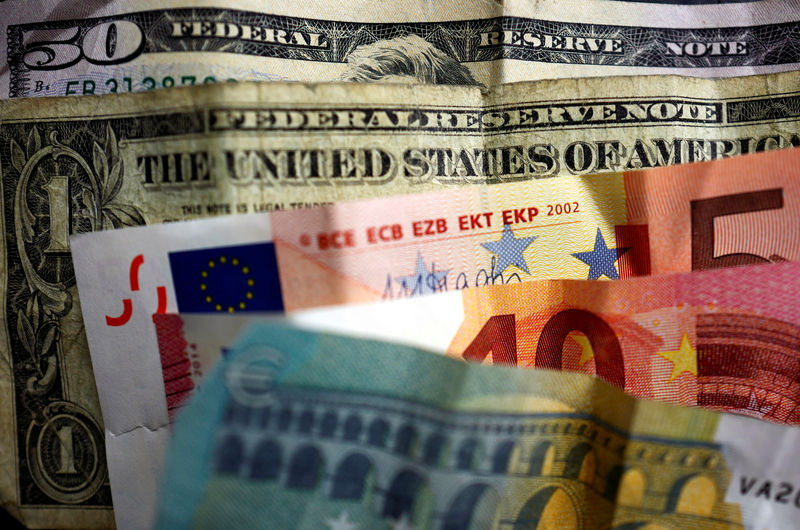By Peter Nurse
Investing.com - The U.S. dollar edged higher in early European trade Wednesday, while the euro languished close to parity ahead of the release of key U.S. inflation data which could cement further hefty rate hikes by the Federal Reserve.
At 03:10 AM ET (0710 GMT), the Dollar Index, which tracks the greenback against a basket of six other currencies, traded 0.1% higher to 107.977, remaining near the two-decade peak of 108.560 it reached earlier this week.
EUR/USD traded largely unchanged at 1.0038, marginally above the 20-year low just above parity the pair fell to on Tuesday.
Attention Wednesday is focused squarely on the release of the latest U.S. consumer prices data later in the session, which is expected to show that headline U.S. inflation accelerated to 8.8% year-on-year in June, up from 8.6% in May and a 40-year high.
Such a number is likely to reinforce expectations of more interest rate hikes by the Federal Reserve, on top of the hefty 75 basis point increase the central bank policymakers authorized in June, the largest rise since 1994, to the further benefit of the dollar.
On the flip side, the single currency is being hit by concerns of a potential energy supply crunch if Russia further curbs the export of gas to Europe, weakening the Eurozone’s growth outlook and potentially causing the European Central Bank to blink having pointed to rate hikes in the summer.
“The question now is whether the [EUR/USD] pair can find some support and stage at least a mini-rebound, or break below parity,” said analysts at ING, in a note. “If we look at the global economic picture, we believe the second option remains more likely, and even if we think that a return to 1.0500 in the autumn is still a tangible possibility, a short-lived dip to 0.9800-0.9900 in the coming days looks relatively likely.”
Elsewhere, USD/JPY rose 0.2% to 137.14, not far from its highest level since 1998 reached on Monday at 137.75, with the Bank of Japan sticking to its soft monetary policy stance even as the Fed tightens aggressively.
GBP/USD rose 0.3% to 1.1924, boosted by the news that the U.K. economy expanded unexpectedly in May, with GDP rising 0.5% on the month, with health services a major driver of growth.
Meanwhile, eight Conservatives will fight it out to succeed Boris Johnson as party leader and British prime minister after winning enough nominations from their colleagues to go through to the first round of voting on Wednesday.
“We think the impact on sterling of the leadership contest will remain limited,” added ING. “GBP/USD remains strictly tied to dollar moves and external factors, and a further drop to the 1.16-1.17 area can’t be excluded at this stage.”
Risk sensitive AUD/USD rose 0.1% to 0.6764, while NZD/USD fell 0.1% to 0.6130 after New Zealand’s central bank raised interest rates by half a percentage point for a third straight meeting, as expected.
USD/CAD fell 0.1% to 1.3015 ahead of the next meeting of the Bank of Canada later Wednesday, which is expected to result in a 75-basis-point increase to 2.25% from 1.5% as the central bank tries to tackle runaway inflation.
